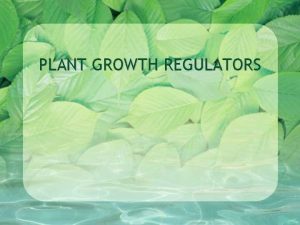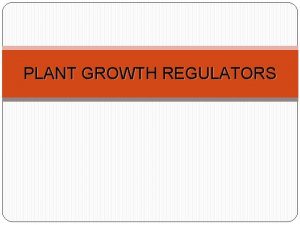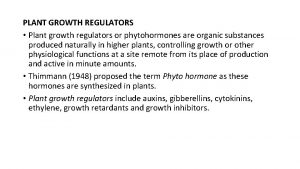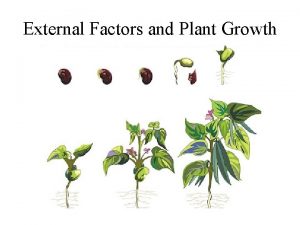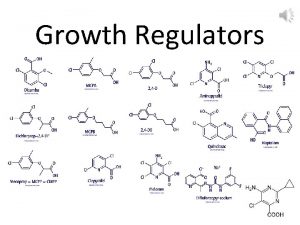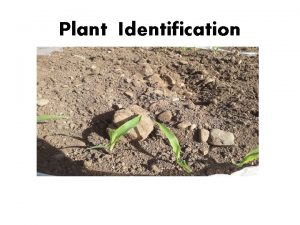Identification and Use Natural Plant Growth Regulators and










- Slides: 10

Identification and Use: Natural Plant Growth Regulators and Micronutrients

• In organic farming chemical fertilizers are not allowed and only organic manures and organic fertilizers are allowed. • whatever might be the nutrient requirement of the crops, it has to be supplied through organic sources only. • Generally organic sources are referred as complete plant food as they contain all the essential plant nutrients.

• Different nutrient management practices followed in organic farming for secondary and micronutrient management are application of FYM, compost, oil cakes, liquid organic manures, biofertilizers, animal manures and organically approved amendments, cropping system management viz. , green manures (One season in a year), crop rotation, intercropping, crop residues management as mulch.

Microbial fertilizers • The microbial fertilizers mostly consist of organic material and some source of sugar or starch, which are fermented together with specific species of microorganisms. The products are living organisms and need to be applied cautiously. They should not be used when expired, since the organisms may be dead.

• Most of the bacteria and fungi present in the purchased products are generally present in soil. Microbial inocula, therefore, enhance the presence of the specific organisms. Some farmers make their own microbial fertilizers to save on costs. Plant growth regulators : Plant growth regulators may be defined as any organic compounds, which are active at low concentrations (1 -10 ng / nl) in promoting, inhibiting or modifying growth and development.

Classification: 1. Auxin 2. Gibberellin 3. Cytokinenin 4. Etylene 5. Dormins (Abscissic Acid (ABA), Phaseic Acid) 6. Flowering Hormones (Florigin, Anthesin, Vernalin) 7. Phenolic Substances (Coumarin) 8. Miscellaneous Natural Substances (Vitamins, Phytochrome Tranmatic Substances)

9. Synthetic Growth Retardants (Ccc, Amo, 1618, Phosphin - D, Morphacting, Malformis) 10. Miscellaneous Synthetic Substances (Synthetic Auxins, Synthetic Cytokinins)

Role of plant growth regulators in organic horticulture 1. Cell divisions and enlargement Eg. cambial growth in diameter- IAA + GA 2. Tissue culture – Shoot multiplications (IBA and BAP), callus Growth (2, 4, -D), root multiplication IAA and IBA (1 -2 mg) 3. Breaking dormancy dominance – NAA and Apical 4. Shortening internode – Apple trees (NAA) (dwarf branch-fruit)

Mineral fertilizers The mineral fertilizers, which are allowed in organic horticulture, are based on ground natural rock. However, they may only be used as a supplement to organic manures. If they contain easily soluble nutrients, they can disturb soil life and result in unbalanced plant nutrition. In some cases, mineral fertilizers are ecologically questionable as their collection and transport is energy consuming and in some cases natural habitats are being destroyed.

 Gmail
Gmail Billy antrim
Billy antrim North american gaming regulators association
North american gaming regulators association Ac voltage controller and cycloconverter
Ac voltage controller and cycloconverter Function of verbal communication
Function of verbal communication Transistor series voltage regulator supplier
Transistor series voltage regulator supplier Insulin
Insulin Presumptive identification vs positive identification
Presumptive identification vs positive identification Growth is defined as an increase in
Growth is defined as an increase in Monocots vs eudicots
Monocots vs eudicots Primary growth and secondary growth in plants
Primary growth and secondary growth in plants











